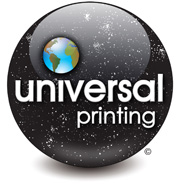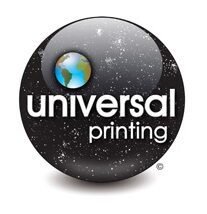Printing Ink 101: Why Reflex Blue makes people CRAZY!
Here’s a simple “fun” fact about printing: Printers CRINGE at projects with dark blue ink!
“Why?” you ask. True simple words: REFLEX BLUE
 In a previous blog post, Spot Color vs Process Color, we talked about the 14 Pantone mixing inks that are used to build all other Pantone colors. One of these colors is Reflex Blue, which is a color best described as a deep blue-violet hue. It’s much richer than its closest mixing ink, Blue 072. Reflex Blue gets its rich color from a family of pigments referred to as Alkali Blue pigments, which includes the mineral cobalt. These mineral are VERY strong in color, and give Reflex Blue it’s rich deep hue. But like most of other alkaline minerals (like limestone and soapstone) they are very porous, even at the granular level. In short, the thing that makes Reflex Blue look like Reflex Blue, are minerals that act like lil mini sponges.
In a previous blog post, Spot Color vs Process Color, we talked about the 14 Pantone mixing inks that are used to build all other Pantone colors. One of these colors is Reflex Blue, which is a color best described as a deep blue-violet hue. It’s much richer than its closest mixing ink, Blue 072. Reflex Blue gets its rich color from a family of pigments referred to as Alkali Blue pigments, which includes the mineral cobalt. These mineral are VERY strong in color, and give Reflex Blue it’s rich deep hue. But like most of other alkaline minerals (like limestone and soapstone) they are very porous, even at the granular level. In short, the thing that makes Reflex Blue look like Reflex Blue, are minerals that act like lil mini sponges.
So… for those not familiar with printing, the process is best described as a balancing act! All press operators are constantly juggling 4 parts:
Image (generally on a metal or polyester plate)
Ink (the liquid, oil-based color that’s being printed)
Water (pH specific water and other additives to aid with conductivity, release, and drying,
typically called “Fountain Solution”)
Paper (the text or cover stock you’re running, along with its thickness and finish.)
Once the ink is transferred onto the paper, it’s very wet and easily smudged or smeared. Before it can be handled, or even printed on the second site, the ink needs time to dry. Certain colors dry faster. Generally lighter colors will dry very quickly, darker colors take a bit longer. And then there’s our good, old-faithful Reflex Blue: Remember all those lil mini sponges that make it such a great color? Yes… these also work VERY hard against the drying process, Depending on the surface of the stock, and the amount of coverage, there are some experts that will say Reflex Blue NEVER really fully dries.
Wait… there’s more!
 For any of you that are lucky enough to have a Pantone book, you may notice that most of them have mixing formulas. Let’s look at a very standard Royal Blue color: Pantone 286. The formula for mixing that is 25% Process Blue and 75% Reflex Blue. As a result, it’s going to take a while to dry. Compare that to Pantone 2747, which appears to be a darker, deeper navy blue. That formula is about 94% Blue 072 and 6% Black; NO REFLEX! A slightly different set of minerals allow this color, which appears deeper, to actually dry faster. Strange, indeed!
For any of you that are lucky enough to have a Pantone book, you may notice that most of them have mixing formulas. Let’s look at a very standard Royal Blue color: Pantone 286. The formula for mixing that is 25% Process Blue and 75% Reflex Blue. As a result, it’s going to take a while to dry. Compare that to Pantone 2747, which appears to be a darker, deeper navy blue. That formula is about 94% Blue 072 and 6% Black; NO REFLEX! A slightly different set of minerals allow this color, which appears deeper, to actually dry faster. Strange, indeed!
Why does this matter?
It’s important to know at the design and project planning stage what inks you’re dealing with. If you or your clients have their hearts set on an ink made with Reflex Blue, you may want to consider a coating or varnish option to help with handling the finished pieces. You also may need to factor in additional production time into the printing of the piece.

Universal Printing
Offering quality printing and communications solutions to
Raleigh, Durham, Chapel Hill, and the Triangle since 1979.
www.universalprinting.com
Tags: commercial printing, G7, graphic design, offset printing, printing
